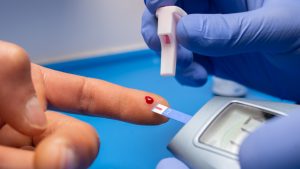Type 2 diabetes has become a global epidemic affecting millions of people worldwide. While there is no cure, there are effective strategies to prevent or delay its development. Among these, physical activity plays a fundamental role, acting as a powerful natural medicine.
In this informative and hopeful blog, we will explore the deep connection between physical activity and the prevention of type 2 diabetes. We will discover how movement can transform your health, improve your well-being, and open the doors to a brighter and healthier future.
How does physical activity work to prevent diabetes?
Physical activity has a positive impact on various aspects of metabolism, directly contributing to the prevention of type 2 diabetes:
- Regulates blood sugar: Physical activity increases insulin sensitivity, allowing the body’s cells to absorb glucose more efficiently, thus lowering blood sugar levels.
- Promotes weight loss: Excess weight is a major risk factor for type 2 diabetes. Physical activity helps burn calories, contribute to a healthy weight, and reduce the risk of developing the disease.
- Lowers blood pressure: High blood pressure is also associated with an increased risk of diabetes. Physical activity helps lower blood pressure, protecting your cardiovascular health and reducing the risk of diabetes.
- Improves cardiovascular health: Regular exercise strengthens the heart, improves blood circulation, and reduces the risk of heart disease, a serious complication of diabetes.
What type of physical activity is recommended?
The physical activity recommendations for preventing type 2 diabetes are accessible and adaptable to different lifestyles:
- Aerobic physical activity: It is recommended to perform at least 150 minutes of moderate-intensity aerobic physical activity per week, such as brisk walking, swimming, or cycling.
- Strength training: Incorporating strength training exercises at least two days a week helps build muscle mass, which improves metabolism and insulin sensitivity.
- Physical activity in your daily routine: Find opportunities to incorporate movement into your daily life, such as taking the stairs instead of the elevator, walking or cycling short distances, or taking active breaks during work.
How to get started moving to prevent diabetes?
It is not necessary to become an elite athlete to benefit from the preventive power of physical activity. Small changes can make a big difference:
- Start slowly: If you are not used to physical activity, start with short, low-intensity sessions and gradually increase the duration and intensity as you feel more comfortable.
- Find activities you enjoy: Choosing activities that you find enjoyable and fun will help you stay motivated and make exercise a pleasurable habit.
- Set realistic goals: Set achievable goals and celebrate your accomplishments, no matter how small. This will help you stay motivated and on track.
- Find company: Get friends, family, or coworkers to join you on your physical activity journey. Social support can be a great motivator.
Remember:
- Physical activity is not only a tool to prevent diabetes, but it also improves your mood, reduces stress, increases your energy, and helps you maintain a healthy weight.
- Consult your doctor before starting an exercise program, especially if you have any pre-existing medical conditions.
- It’s never too late to start moving! Even small changes in your lifestyle can have a significant positive impact on your health and well-being.
Embark on your journey to a healthier future today! Incorporate physical activity into your daily routine and discover the transformative power of movement to prevent diabetes and enjoy a fulfilling and vibrant life.
Additional resources:
- https://www.cdc.gov/physical-activity/php/about/index.html
- https://www.who.int/news-room/fact-sheets/detail/physical-activity
- https://diabetes.org/health-wellness/fitness
Share this blog with your loved ones and encourage them to discover the preventive power of physical activity!
Together we can build a healthier and diabetes-free future!
E4 Helps you:
At E4, we’re dedicated to revolutionizing how people manage type 2 diabetes through our innovative E4 Alive program. Our team of specialists has joined forces to create a comprehensive solution aimed at empowering individuals to take charge of their health journey. With personalized support and resources tailored to each person’s unique needs, we make managing diabetes simpler and more effective than ever before.
E4 Alive offers a range of tools and resources to help you better understand and control your blood sugar levels. Our program provides personalized guidance to create a healthy eating plan and integrate regular physical activity into your daily routine. Plus, you’ll have access to a supportive community of individuals who understand your challenges and are there to offer encouragement and guidance every step of the way.
By joining E4 Alive, you can effectively manage your blood glucose levels, improve long-term glycemic control, reduce your risk of diabetes-related complications, and enhance your overall quality of life. It’s not just a program; it’s an opportunity to reclaim your health and vitality. Ready to start your journey to better health? Visit THIS PAGE to learn more about E4 Diabetes Solutions and the E4 Alive program.
To learn more about E4 Diabetes Solutions and the E4 Alive program, visit THIS PAGE.

Type 2 Diabetes: Is It Really Reversible?
A recent National Geographic article [link] explores how type 2 diabetes could be reversible with the right approaches. This condition, which affects millions of people worldwide, has long been considered a chronic and progressive disease. However, recent research challenges this perception and suggests that with lifestyle changes and the right approach, remission is possible. The

How Do GLP-1 Drugs Compare? A Breakdown of Ozempic, Mounjaro, and Trulicity
GLP-1 receptor agonists have revolutionized diabetes management, with drugs like Ozempic, Mounjaro, and Trulicity leading the market. But how do these medications compare in terms of effectiveness, side effects, and patient outcomes? Let’s explore their differences and what they mean for diabetes patients. Understanding GLP-1 Medications GLP-1 receptor agonists mimic a natural hormone that helps

Why Has Medicare Spending on Diabetes Medications Skyrocketed in 5 Years?
In the past five years, Medicare spending on diabetes medications has increased nearly fivefold, reaching $35.8 billion in 2023. This surge has been primarily driven by the growing use of GLP-1 drugs such as Ozempic, Mounjaro, and Trulicity. But what is behind this cost escalation, and how does it affect patients and the U.S. healthcare

The Gut Microbiota and Blood Sugar Control: A Hidden Connection
The human gut is home to trillions of bacteria that play a crucial role in digestion, immune function, and even metabolism. Recent research has revealed a fascinating link between the gut microbiota and blood sugar regulation, shedding light on how the balance of microbes in our intestines can influence diabetes risk and overall metabolic health.

The Dawn Phenomenon: Why Blood Sugar Rises While You Sleep
For many people with diabetes, waking up with high blood sugar levels can be frustrating—especially if they didn’t eat anything overnight. This early-morning spike in blood glucose is known as the Dawn Phenomenon, and it happens due to natural hormonal changes in the body. But why does it occur, and how can it be managed?

The Influence of Red Light on Blood: Can It Improve Diabetes?
Type 2 diabetes is a metabolic disease characterized by insulin resistance and elevated blood glucose levels. In the search for complementary alternatives to improve glycemic control, red light therapy has gained attention due to its potential to enhance circulation, reduce inflammation, and optimize cellular function. But what does science say about it? ✨ What is

